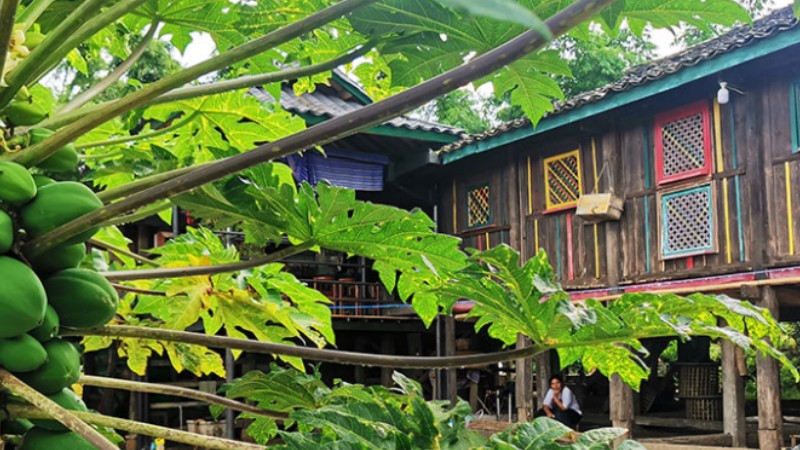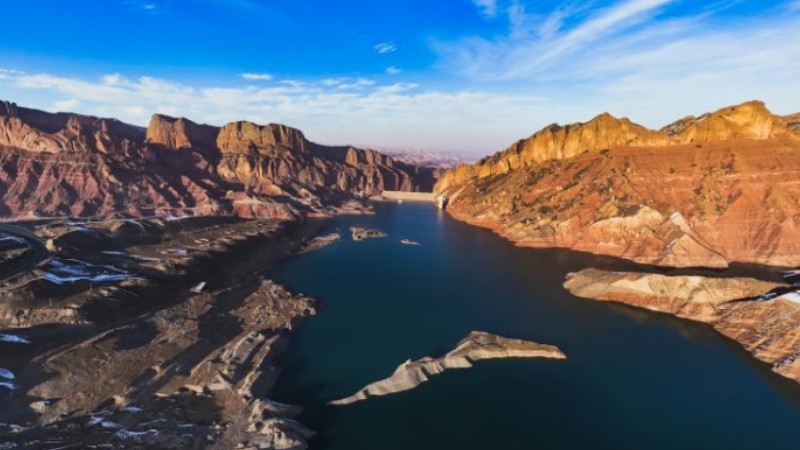Growing seagrass in Yellow River estuary restoration bid
JINAN, Nov. 28 (Xinhua) -- The receding tide at the mouth of the Yellow River in Kenli District of the city of Dongying, east China's Shandong Province, revealed a vast seagrass bed on a morning in late September.
Dozens of workers walked back and forth, gathering Japanese eelgrass seeds to be sown next spring. The seeds, which were about the size of sesame seeds, were not fully mature yet, and the workers put them in mesh bags and then soaked them in water to allow the eelgrass to continue growing.
"Seagrass seeds are too light and will be easily washed away by the waves when they are fully mature, so collecting them around the time of the Mid-Autumn Festival is the best strategy," said Zhou Yi, a researcher at the Institute of Oceanology, Chinese Academy of Sciences.
Zhou Yi, who has been engaged in seagrass bed research for more than 20 years, visits the special "grassland" in the Yellow River estuary every second month.
"This seagrass bed is about 30 hectares in size, and most of it has been restored in the past three or four years," he explained. The Yellow River estuary is one of the native homes of Japanese eelgrass, and was once the largest Japanese eelgrass bed in China. It appears endless and lush like grassland on land when the tide is low.
In 2019, Typhoon Lekima destroyed more than 10,000 mu (about 667 hectares) of seagrass beds, and when Zhou Yi stood at this spot back then his eyes saw large stretches of bare beach.
"Seagrass beds have a similar role to forests on land, supporting benthic organisms such as small fish and crabs and indirectly providing nutrients for a variety of birds," said Zhou Licheng, director of the scientific research center of the management committee of the Shandong Yellow River Delta National Nature Reserve.
Zhou Licheng added that due to Spartina alterniflora invasions and frequent typhoons, seagrass beds in the Yellow River estuary have been greatly damaged, causing breaches in the local intertidal ecosystem.
Spartina alterniflora has been identified by the International Union for Conservation of Nature as one of the 100 most dangerous invasive alien species in the world, and is among the earliest invasive alien species to be officially recognized as a threat by Chinese authorities.
In order to restore the ecosystem, the reserve has since last year cooperated with the Institute of Oceanology and the Ocean University of China, as well as other institutes, to promote the repair of seagrass beds.
Growing seagrass underwater is quite different from growing grass on land.
"We have tried direct planting, direct seeding and other methods, but due to the influence of submarine sediment, ocean currents and other factors, the plants and seeds sown can be easily washed away or eaten by marine organisms," Zhou Yi explained, adding that after many attempts, the team finally developed a combination of transplanting seedlings and planting "rolled clay balls."
As the name suggests, the "rolled-clay-ball" method means wrapping the seeds in soil like making dumplings, adding necessary nutrients, and then using machinery to sow the "balls" on the beaches, according to Zhou Yi.
Over recent years, the reserve has launched four major projects including Spartina alterniflora management and seagrass bed restoration. As of the end of September, the total area of wetland in the reserve had grown by 188 square kilometers, up 12.3 percent year on year.
Research has shown that one third of the world's seagrass beds have been lost due to a combination of human activities and global climate change over the years. Therefore, growing seagrass under the sea could prove a useful contribution to global marine ecosystem conservation efforts.
On Tuesday, the local government of the city of Dongying held a press conference, announcing that more than 99 percent of its troublesome Spartina alterniflora had been eradicated, while a total of 1,500 mu of local seagrass beds had been restored.
"What we achieved is only a start," said Zhou Yi. "We will explore new ways while observing their results. If this restoration method is proven effective by long-term practice, we will promote it in more places."
Photos
Related Stories
- In pics: pottery Xuns made of materials sourced from Yellow River
- Meet Gao Ruyi, "Swan Dad" of the Yellow River
- Quantum technique used to determine age of modern Yellow River: study
- View of Yellow River estuary in Dongying, east China's Shandong
- Yellow River's ecological progress through lens of rural photographer
Copyright © 2023 People's Daily Online. All Rights Reserved.









